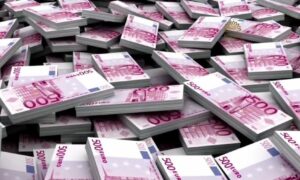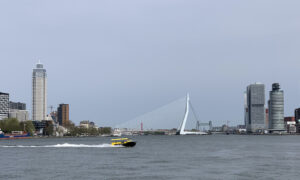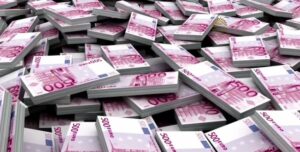by BERT-JAN WOERTMAN and MARIJN VAN DER POLL
Energy, creativity, technology: These are the main ingredients in the pressure cooker of the Dutch Design Week, the world’s most innovative design festival.
 This week, about 300,000 visitors from all over the world – ranging from creatives to business – descend upon the small city of Eindhoven in the northwest of Europe to get a glimpse of what the future holds. And find inspiration for their product roadmaps along the way.
This week, about 300,000 visitors from all over the world – ranging from creatives to business – descend upon the small city of Eindhoven in the northwest of Europe to get a glimpse of what the future holds. And find inspiration for their product roadmaps along the way.
In this city, design has outgrown its traditional role as the finishing touch for products and services. No longer merely a nice cover or a smooth user interface, design has become a key differentiator for technological innovations.
With about 2,500 innovators exhibiting at 100 locations around Eindhoven, Dutch Design Week has grown into “a global center of design experimentation,” according to the New York Times.
“We have witnessed a pivotal paradigm shift in recent years within the highly innovative ecosystem that defines the city of Eindhoven, host of the Dutch Design Week,” said Martijn Paulen, director of the Dutch Design Week.
Paulen has seen the growing role of design in today’s technology-driven world. “That’s why we’ve stopped treating design and technology as separate worlds,” he says. “They need each other, and the boundaries between them are more diffuse than ever. And I believe this Tech-Design love affair will change the world.”
Purpose-driven approach
Eindhoven operates at the very heart of this new paradigm, rooted strongly in both technology and design. We’re traditionally strong in high-tech R&D, home to a vibrantly innovative design community and known for our egalitarian work ethic.
In Eindhoven, designers, academics and local government officials work together in tightly knit networks focused on solving today’s problems with tomorrow’s technology.
Which is why New York Times dubbed Eindhoven “a global center of design experimentation.”
So how does design become a partner of technology instead of an afterthought? The key factor is putting center-stage the actual problem that needs to be solved.
In a sense, the social problem matters more than the product and defines how that product is marketed, used, and eventually disposed of in a circular economy.
As philosopher Abraham Kaplan famously said, “Give a small boy a hammer and he will find that all he encounters needs pounding.”
Before creating that hammer you need to look at which nails need hammering and why. Designers are especially good at that. For example, students at Eindhoven Design Academy are now working with a prosthetics manufacturer from Iceland.
This generation of designers is not concerned with product design, but rather spend their time thinking about social issues like the acceptance of prosthetics in society. Knowing the context in which the product is introduced contributes more to its success than focusing only on look and feel.
Getting something to work is only half the challenge. The other half is making innovation acceptable and interesting to the end users.
Design smoothes that transition by investigating why, when, where, and how people are going to use the technology.
By employing this human and purpose-driven approach, designers can make great technology truly disruptive.
When you think about people, design becomes crucial
Many companies have discovered the benefits of involving design into their innovation plans from the get-go. Research has shown companies that invest in and use design strategically have a higher average output per employee.
“It’s impossible to innovate alone,” says Geert Christiaansen, director of design innovation at Philips Design. His business unit had its own separate office for decades but is now embedded into Philips Healthcare, working together in multidisciplinary teams. “To transform the delivery of health we bring together different disciplines in the company, combining technology, business and design.”
Bridging technology and design has long been a typical Dutch way of thinking, encapsulated in the well-known label “Dutch design.” However, it is not confined to The Netherlands.
International companies such as IKEA and its innovation lab Space10 also believe in merging the two worlds. “I like to look at what a product should be and what people should do with it,” said Space10’s creative director Kaave Pour in an interview with High Tech Campus Eindhoven. “And when you think about people, design becomes crucial.”
Using design to overcome a social taboo
Technology and design badly need each other to solve today’s global challenges. Whether it’s robotics, the circular economy, a solar-powered car or a smart solution to food waste, a tech-design partnership has a much higher chance of succeeding.
As Dutch Design Week director Martijn Paulen remarks, “An early cooperation between designers and techies leads to innovation that has real impact, instead of dashing high-tech exploits nobody is waiting for.”
Take Eindhoven-based start-up LifeSense Group. They’ve developed women’s underwear that measures urine loss through a sensor and provide women with exercise regimes to overcome the problem of incontinence, which starts with pregnancy in many women.
One of the founders of LifeSense has a master’s degree in social design.
The team accelerated their business when they took the idea out of the medical sphere and focused instead on the social taboo of incontinence.
This spurred the decision to make the underwear a lifestyle product rather than a medical device and resulted in beautifully designed panties with an entirely invisible sensor. Without that design-driven input, LifeSense would have probably ended up with a diaper-like solution no woman would have wanted to wear.
DDW: the avant-garde of the design world
The Dutch Design Week is flooded with representatives from tech companies that have partnered with designers from the Design Academy Eindhoven. This tech-design love affair cross-pollination has led to the thought-provoking experiments that has made DDW the avant-garde of the design world. As Marcus Fairs, editor-in-chief of the influential online design magazine Dezeen said, “If the Salone del Mobile in Milan is the store where design is marketed, then Eindhoven represents the research and development of the design branch.”
Here are five must-see expo’s presenting the most beautiful, meaningful, and promising offspring from the tech-design love affair.
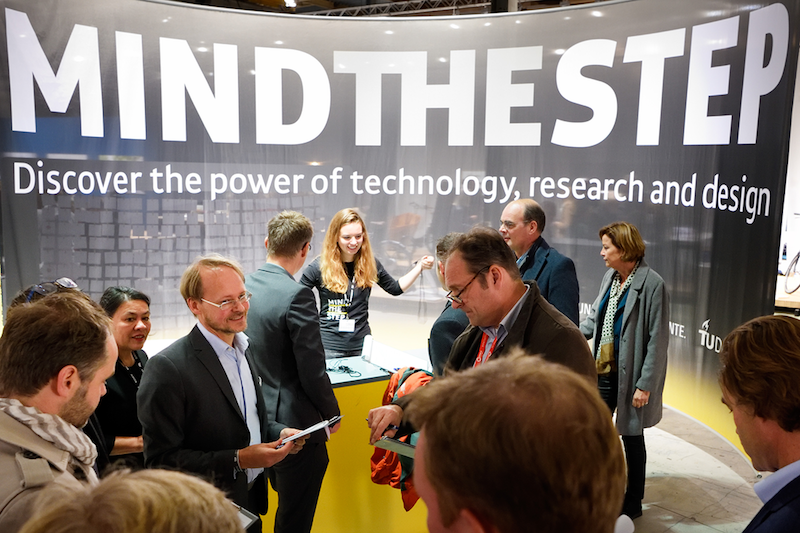
• University-born hybrids: Mind the Step
Mind The Step is an exhibition hybrid spanning research, technology, and design. It shows how design plays a crucial social role through the medium of research and technology. From smart wearables to an exploration of future cities, Mind the Step is a platform for an ongoing debate about how technology can contribute to a better society. The exhibition is organized by the technical universities of Eindhoven, Delft and Twente.
• Startup disruption: Radius
The start-up world is well represented at DDW. In the Radius project, nine startups present a disruptive blend of technology and design aimed at improving people’s lives. Ranging from a 3D product configurator to an online tool for tailor-made woolen designer clothes, these startups celebrate “the magical symbiosis of technology and design.”
• Crossover between art and technology: Manifestations
Voted as the best exhibition of last year’s DDW, Manifestations bristles with futuristic concepts on the crossroads between art and technology. Useful ideas with a touch of weirdness, such as smell dating, clothing with goosebumps, and a family cocoon dot the immense 48,000-square-foot exhibition.
• Employment agency for man & machine: HUBOT
The HUBOT exhibition explores the new labor market arising from the immersion of robots in the workspace. The designers are optimistic about the future. If humans and robots work together, a host of new jobs can be created. By partnering with the right kind of robot, HUBOT helps you find your future dream job.
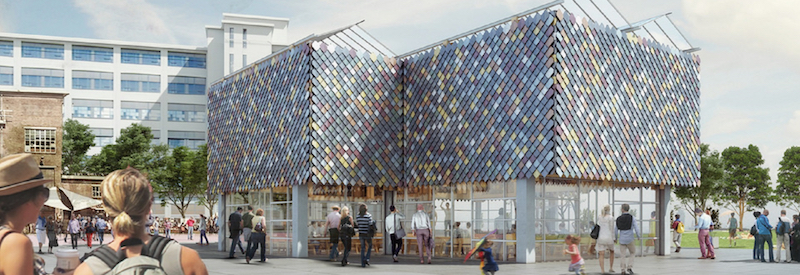
• Paragon of the circular economy: People’s Pavilion
The building of the People’s Pavilion is its own exhibit. Made entirely of materials borrowed from local businesses and citizens, such as glass, wood and plastics, the People’s Pavilion is a living testimony to the concept of the circular economy. During DDW the venue hosts lectures, concerts and performances. All materials will be returned to their rightful owners at the end of the week.
Needless to say, this is just the tip of the iceberg. But no matter where you go at DDW, be prepared for shocking innovation brain waves that keep you reeling for weeks.
About the authors
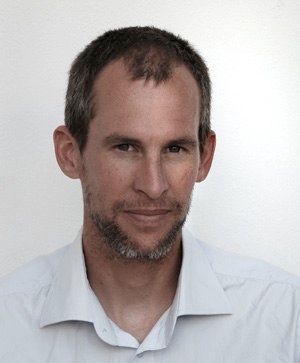
MARIJN VAN DER POLL

BERT-JAN WOERTMAN
Bert-Jan Woertman is commercial director at Eindhoven University of Technology.
Marijn van der Poll is a designer who trains companies in ideation. He lectures at the Eindhoven Design Academy, Europe’s most influential design school, and is a former curator of the Dutch Design Week.



